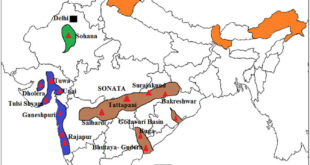- Recently, the Union Minister of State Science & Technology has proposed Integrated Aroma Dairy Entrepreneurship for Jammu & Kashmir to augment the income of farmers.
- The Aroma Mission, also popularly referred as “Lavender or Purple Revolution”, has started from J&K and transformed the lives of farmers who are able to grow lavender, make lucrative profit and improve their lives.
- Earlier, the floriculture mission was launched in 21 States and Union Territories.
Important points:
- To promote the cultivation of aromatic crops for essential oils that are in great demand by the aroma industry.
- To enable Indian farmers and the aroma industry to become global leaders in the production and export of some other essential oils on the pattern of menthol mint.
- To provide substantial benefits to the farmers in achieving higher profits, utilization of waste lands and protection of their crops from wild and grazing animals.
Nodal Agencies:
- The nodal laboratory is CSIR-Central Institute of Medicinal and Aromatic Plants (CSIR-CIMAP), Lucknow.
- The participating laboratories are CSIR-Institute of Himalayan Bioresource Technology (CSIR-IHBT), Palampur; CSIR-Indian Institute of Integrative Medicine (CSIR-IIIM), Jammu etc.
- The scientific interventions made under the mission project provided assured benefits to the growers of Vidarbha, Bundelkhand, Gujarat, Marathwada, Rajasthan, Andhra Pradesh, Odisha and other states where farmers are exposed to frequent episodes of weather extremes and account for maximum suicides.
- Aromatic Plants include lavender, damask rose, mushk bala, etc.
Significance:
- Apart from being in sync with government policy of doubling farm incomes by 2022, the missiom also provided employment to the women farmers thus giving impetus to inclusive growth.
- Floriculture has the potential to provide employment to a large number of people through nursery raising, floriculture farming, entrepreneurship development for nursery trade, value addition and export.
- India has diverse agro-climatic and edaphic conditions (physical, chemical, and biological properties of soil), and rich plant diversity, still it shares only 0.6% of the global floriculture market.
- At least 1200 million USD worth of floriculture products are being imported by India every year from different countries.
SOURCE: THE HINDU,THE ECONOMIC TIMES,MINT
 Chinmaya IAS Academy – Current Affairs Chinmaya IAS Academy – Current Affairs
Chinmaya IAS Academy – Current Affairs Chinmaya IAS Academy – Current Affairs



